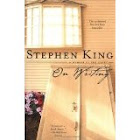

Sheila: We have here with us today Heather Montgomery, author of numerous nonfiction books. But it took nine years to get "How Rude" published. That's encouraging to me, to not give up on something you're passionate about. Tell us how you
went from idea to book.
Heather: I love bugs! When I started writing books for kids, I automatically turned to insects as a topic.
One
day I watched this crazy bug - an ant lion - slurp out the guts of an
ant. Then the antlion tossed away the ant skeleton as if tossing litter
out the car window. A "litter bug" - how funny and fascinating! This
idea of bugs with improper eating habits struck me as hilarious and a
way to hook kids. So, I began collecting information about "bad boys" -
bugs who don't mind their manners.
The problem
was, I did not know how to write a nonfiction book for children. I
loved books by April Pulley Sayre that use rhyme to introduce
information to children, so I wrote it with rhythm and rhyme. It was
awful. I loved Megan McDonald's Insects Are My Life, a fictional
book that teaches about bugs so I tried that approach. Even I cringed
when I read that version. I love the nonfiction poetry books by Joyce
Sidman, so I tried that approach. Blaaagh! From 2006 to 2010, I tried
and tried and tried but just could not find the right approach for this
book.
Meanwhile, I was attending conferences
of the SCBWI (Society for Children's Book Writers and Illustrators),
intensely studying books that I respected, and participating in multiple
critique groups. I was learning tons and changing my ideas about the
what made a "good" kids' book.
One evening in 2010, I decided to just stop paying attention to how everyone else wrote books and be myself. That night, How Rude! came
to life. All of these "bad boy" bugs in my head were in a competition
to see who was the rudest, crudest dude around. The book poured out.
In
an ideal world, I would have sold that manuscript to a publisher the
next week and published immediately, but this manuscript was weird! It
presented advanced scientific ideas in a quirky, humorous way. It pushed
the boundaries in terms of anthropomorphism, tongue-in-cheek humor and
expectations of the reader. Rejection letter after rejection letter told
me the publishing world was not ready for such an off-beat approach.
So, I put it away and worked hard publishing other books.
But,
with the release of the Common Core Standards and subsequent interest
in nonfiction, trade nonfiction books began breaking out of the
traditional mold. Publishers began looking for unique manuscripts. My
bad boys were ready and waiting. The manuscript was submitted in 2013,
sold in 2014 and published in 2015.
Sheila: Tell us about the research process and organizing sources.
Heather: Research
is my life! I have cultivated a habit of inquiry so I don't see it as a
separate process, but looking back, I can say that I spent years
researching this book. At the time I did not have a great method for
organizing sources. Basically, I stored all of my notes in one huge
Excel file and stored academic papers separately. Since then I have
learned to use OneNote (a Microsoft product) and EasyBib (online
bibliography) which works much better.
Sheila: Did you do any interviewing? If yes, tell us how you found experts
to interview.
Heather: I often do phone or email interviews of
scientists. I track them down through reading their scientific paper on
the subject and then contact them through their university department.
Sheila: I know you are passionate about your subjects. It shows in your
writing and is contagious. Do you test drive your ideas among your
students?
Heather: I'm fortunate enough to teach in
an outdoor setting. I've taught thousands of students about insects so I
have a pretty good sense of how they will react to wacky, weird or
gross bug behaviors, but knowing how they will react to reading about
them is a different thing. I am sorry to admit that I did subject some
students to early drafts (the rhyming ones) of this manuscript. By
watching their faces, I could tell very quickly that they preferred my
teaching to my writing. Right then and there, I knew that I needed to
make a change.
Sheila: How did you find a publisher for this book.
Heather: I found
potential publishers through attending SCBWI conferences and workshops
plus studying the trade market (reading publications such as Publishers Weekly).
Sheila: Any pitching or query tips you could share with us?
Heather: Know the hook
for your book. What makes it stand out from all the other books out
there.
Leave a comment to be eligible to win "How Writer's Work by Ralph Fletcher or "Eddie Red" by Marcia Wells
 Finally! The secrets on being a writer are revealed.
Finally! The secrets on being a writer are revealed.

 There's been some chatter about books for reluctant boy readers and I would like to recommend this one.
There's been some chatter about books for reluctant boy readers and I would like to recommend this one.




